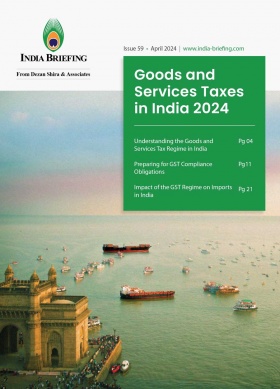Tracking Key Financial Metrics for Indian SMEs
Tracking key financial metrics is essential for Indian SMEs (small and medium-sized enterprises) to ensure financial health, plan strategically, and sustain growth. The right metrics provide insights into profitability, cash flow, liquidity, and operational efficiency, enabling SMEs to make informed decisions in a competitive market.
Financial metrics enable informed decisions about operations and investments by providing a data-backed foundation rather than relying on assumptions. By following the process, business owners can monitor both short-term and long-term financial health and make adjustments accordingly.
Ultimately, financial metrics reveal your business’ strengths and weaknesses and allow you to set realistic goals to support continuous growth.
Financial metrics: What they are and why they matter
Financial metrics and key performance indicators (KPIs) track and analyze numerical data to give meaningful insights. They offer a straightforward way to assess how your business is performing in relation to its goals over a given period. For instance, one can use a profit and loss report that categorizes revenue and expenses, rather than combing through figures to determine profitability from the previous year. Knowing what affects one’s business equips you to manage its profitability more effectively.
Tracking company’s performance is essential for identifying and correcting issues early before they impact business output. For example, if there is a dip in sales, one can investigate and resolve the issue before it harms profits.
Selecting the right financial metrics for your business
There are multiple metrics available, however, it is important to select the right one for as per the business operations. Focusing on diversified metrics can be time consuming and skew your understanding of your business’s direction. To prevent this, it’s essential to focus on metrics that align with your specific business goals.
Business metrics should be chosen based on:
- Revenue
- Cash flow
- Targets
- Current financial status
Metrics such as sales revenue, net profit margin, gross margin, and liquidity ratios are key indicators of a business’s ability to meet short-term financial obligations.
Some essential reports that provide a clear financial picture include the balance sheet, income statement, cash flow statement, and profit and loss report. These reports are crucial not only for internal assessments but also for banking and tax reporting purposes.
Additionally, accounts payable (AP) and accounts receivable (AR) aging reports help you keep track of outstanding dues and pending payments.
There are further metrics that cover growth (in terms of revenue, market share, and profitability) and losses. Monitoring financial ratios, such as the efficiency ratio (cost of generating income), liquidity ratio (extent to which liquid assets cover debts), and profitability ratios (earnings relative to sales) provides a comprehensive view of your business’s financial health.
Financial metrics allow businesses to evaluate different facets of their performance. When focusing on specific challenges, like pinpointing the causes of low cash flow, these metrics help target efforts for effective growth. Regularly reviewing key metrics enables you to prioritize actions that directly support business goals, enhancing progress. While some metrics can be calculated manually, others can be easily accessed via reports in your financial software.
Essential financial metrics for comprehensive business performance and sustainability
To achieve sustainable growth and financial health, businesses must regularly monitor certain key metrics. These metrics serve as a roadmap, offering insights into profitability, operational efficiency, and strategic alignment. Here’s a quick breakdown of essential financial metrics that can guide effective decision-making and highlight areas for improvement.
1. Revenue growth
Revenue growth measures the increase in a company’s sales over a specified timeframe, often compared year-over-year or quarter-over-quarter.
It is a clear indicator of business expansion and market demand. Consistent growth signals effective sales strategies and a strong market position, suggesting a positive trajectory. Conversely, stagnant or declining revenue may point to issues such as competitive pressure, product misalignment, or market saturation. Monitoring this metric helps businesses understand how well they are attracting and retaining customers in the market.
2. Gross profit margin
The percentage of revenue remaining after deducting the cost of goods sold (COGS). This metric reflects the core profitability tied to direct production costs.
Gross profit margin provides insight into a business’s efficiency in managing production or service costs relative to sales. A high margin indicates successful pricing and cost-control strategies, implying that the company can cover its operating expenses and remain profitable. Low gross margins may indicate excessive production costs, insufficient pricing, or operational inefficiencies, all of which can impact long-term viability.
3. Net profit margin
Represents the percentage of revenue that remains after all operating expenses, taxes, interest, and other costs are subtracted.
Net profit margin demonstrates the company’s overall profitability and financial control. A higher net profit margin implies effective management of all business costs relative to revenue, while a low or declining margin may indicate the need to revisit pricing, cost structures, or resource allocation. This metric is crucial for understanding the bottom line and ensuring long-term profitability.
4. Cash flow
Reflects the net cash inflow and outflow over a specific period, showing the business’s liquidity and ability to meet financial obligations.
Positive cash flow is vital for a business’s survival, as it enables the company to pay expenses, invest in growth, and manage day-to-day operations. Negative cash flow, on the other hand, may indicate a struggle to cover immediate costs, requiring closer examination of spending and revenue collection. There are different types of cash flow:
- Operating cash flow: Cash generated by core business activities.
- Investing cash flow: Cash from investments or asset purchases.
- Financing cash flow: Cash from loans, equity, or debt repayment.
5. Working capital
Working capital is calculated as current assets minus current liabilities, this metric reflects a business’s ability to cover short-term obligations.
It is a critical indicator of liquidity and operational stability. Positive working capital suggests the business can easily meet its financial obligations and fund day-to-day activities, while negative working capital can signal financial distress or inefficiency in managing current assets and liabilities.
6. Accounts receivable days (AR Days)
AR days involves the average number of days it takes for the business to collect payments from customers after a sale.
Short AR days imply efficient collections and healthy cash flow, while longer AR days can strain cash resources, signaling potential issues in credit policy or collections processes. This metric is essential for maintaining a steady inflow of cash to support operations and growth initiatives.
7. Debt-to-equity ratio
The ratio of total debt to shareholders’ equity reflects the degree of financial leverage used by the business.
A high debt-to-equity ratio indicates reliance on debt financing, which can increase financial risk and affect creditworthiness. Monitoring this metric helps businesses evaluate their debt levels and ensure they are manageable, striking a balance between leveraging debt for growth and maintaining financial stability.
8. Inventory turnover ratio
Inventory turnover ratio measures how often a company sells and replenishes its inventory over a given period.
High inventory turnover reflects efficient management and strong demand, while low turnover may indicate excess inventory, tying up cash and increasing holding costs. This ratio is key for businesses with significant inventory as it reveals how effectively they are managing stock and meeting customer demand.
9. Customer acquisition cost (CAC)
CAC is the cost associated with acquiring a new customer, including marketing and sales expenses.
Understanding and minimizing CAC helps businesses improve marketing and sales strategies, ensuring that resources are allocated effectively. A balanced CAC relative to customer lifetime value (CLV) is essential for sustained growth.
10. Break-even point
The sales level at which total revenue equals total expenses, leading to no profit or loss, is known as break-even point.
Knowing the break-even point helps businesses set achievable sales targets and establish realistic pricing strategies. It provides insight into the minimum performance needed to avoid losses, guiding decisions on cost management and revenue generation.
11. Return on assets (ROA)
ROA measures how efficiently a business uses its assets to generate profit.
A high ROA indicates effective asset utilization, helping businesses evaluate whether they are making the most of their investments. This metric is valuable for assessing operational efficiency and making data-driven decisions on resource allocation.
12. Earnings before interest, taxes, depreciation, and amortization (EBITDA)
EBITDA indicates operating profitability by isolating earnings before accounting for non-operational expenses.
EBITDA provides a clear picture of operational performance, often used by investors and lenders as a measure of financial health. It allows for a comparison of profitability across companies by removing the impact of financing and accounting decisions.
13. Profit per employee
Profit-per employee metric calculates the revenue or profit generated per employee.
This highlights workforce productivity, revealing how effectively the business utilizes its human resources. It enables management to assess if they are maximizing the potential of each employee, which is crucial for scaling operations efficiently.
14. Operating expense ratio (OER)
OER is the ratio of operating expenses to revenue, showing the proportion of income consumed by day-to-day expenses.
A lower OER indicates efficient cost management and enhances profitability. This metric allows businesses to assess operational efficiency and control overhead costs, ensuring more revenue flows to the bottom line.
Conclusion
By regularly monitoring and analyzing these financial metrics, businesses can gain deeper insights into their financial stability, operational performance, and growth potential. Together, these metrics enable informed decision-making, helping to address challenges proactively and seize opportunities, ultimately guiding the business toward sustainable success and long-term resilience.
About Us
India Briefing is one of five regional publications under the Asia Briefing brand. It is supported by Dezan Shira & Associates, a pan-Asia, multi-disciplinary professional services firm that assists foreign investors throughout Asia, including through offices in Delhi, Mumbai, and Bengaluru in India. Readers may write to india@dezshira.com for support on doing business in India. For a complimentary subscription to India Briefing’s content products, please click here.
Dezan Shira & Associates also maintains offices or has alliance partners assisting foreign investors in China, Hong Kong SAR, Dubai (UAE), Indonesia, Singapore, Vietnam, Philippines, Malaysia, Thailand, Bangladesh, Italy, Germany, the United States, and Australia.
- Previous Article India-Mexico Bilateral Trade and Investment
- Next Article Structuring an International Manufacturing Agreement and Advisory for Foreign SMEs in India








